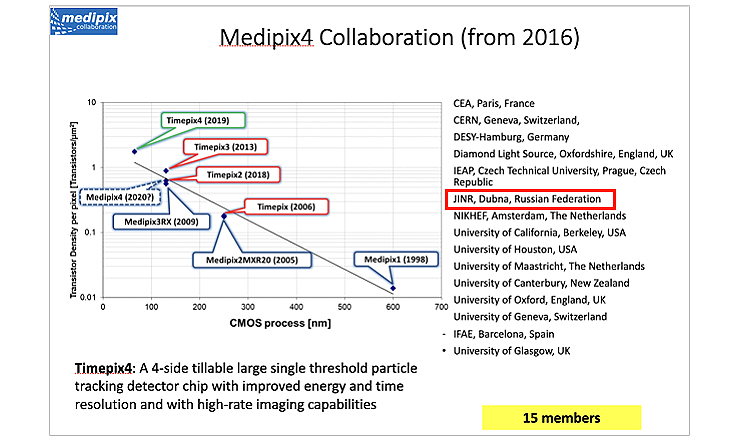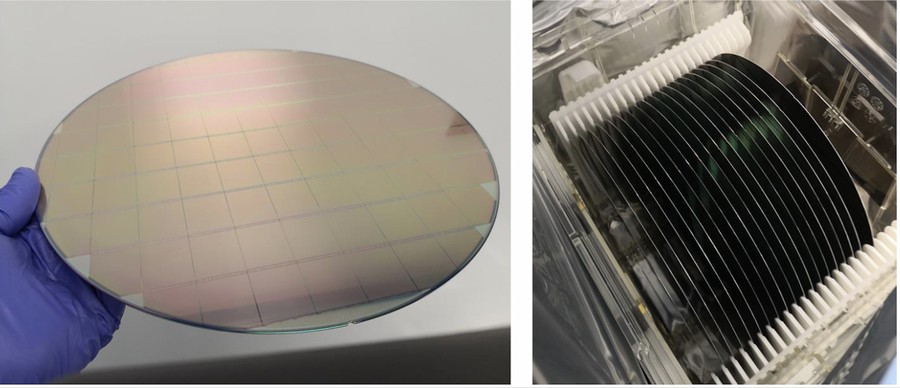Important Milestone Passed: New Tasks in Medipix4 Collaboration
News, 30 September 2021
Since 2015, work on one of the top-priority DLNP directions, Theme 04-2-1126-2015/2023 “New semiconductor detectors for basic and applied research”, has been underway at the Experimental Department of Colliding Beams (EDCB) of the Dzhelepov Laboratory of Nuclear Problems in close cooperation with the International Medipix Collaboration.
Collaboration members are aimed at the development and design of unique matrix chips for semiconductor pixel detectors, including X-ray imaging detectors. Scientific cooperation between the EDCB group and this collaboration started as far back as 2008. By 2011, the world’s first pixel detector with a sensor of high-resistance GaAs and a Timepix chip was developed.
In 2016, the new Medipix4 Collaboration was founded. It comprises 15 scientific centres across the world, including the JINR group. As a result, the position of the group has qualitatively changed: now the scientific JINR group consists of developers and designers of a new-generation pixel chip.
The JINR group is authorized to access all the documentation and allowed to develop its own devices using Medipix4 chips.
The collaboration signed contracts with several highly skilled engineers who did the necessary design and simulation work and developed necessary project documentation in accordance with the collaboration requirements to manufacture the chips the JINR group needed. This lasted for four years.
And just now, the first 19 semiconductor wafers were delivered to CERN with “newborn” Timepix4 chips printed on them. The next work stage begins — studying new chip characteristics, developing prototype units of readout electronics and software to receive and process detector data. And it will be quite a challenge since the data flux rate from one chip can reach 160 Gb/s.
G. A. Chelkov,
the EDCB leading researcher

